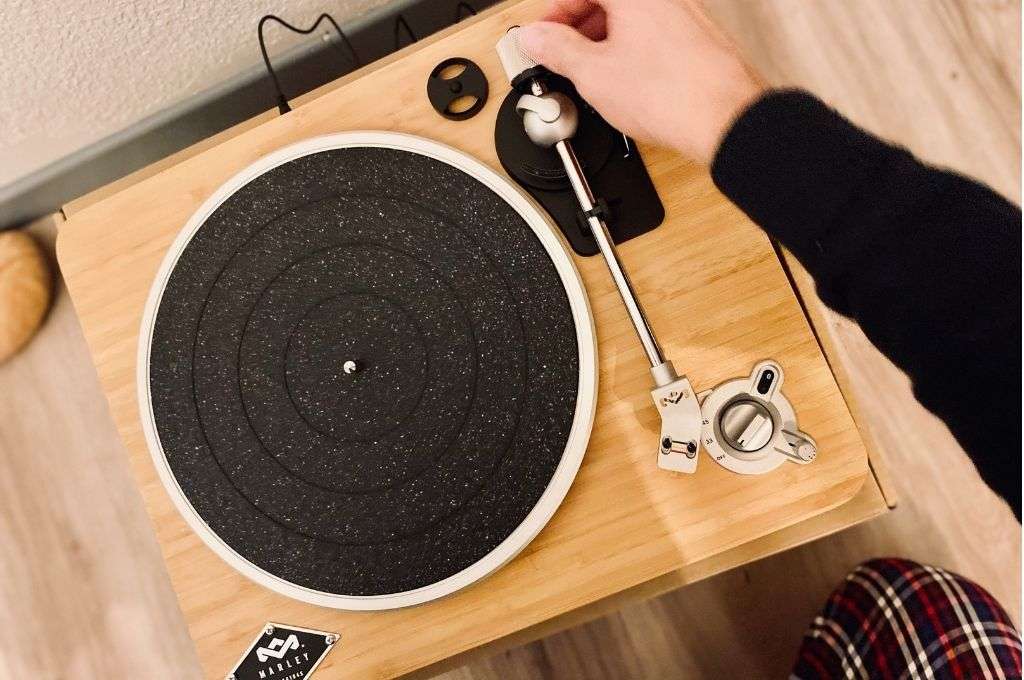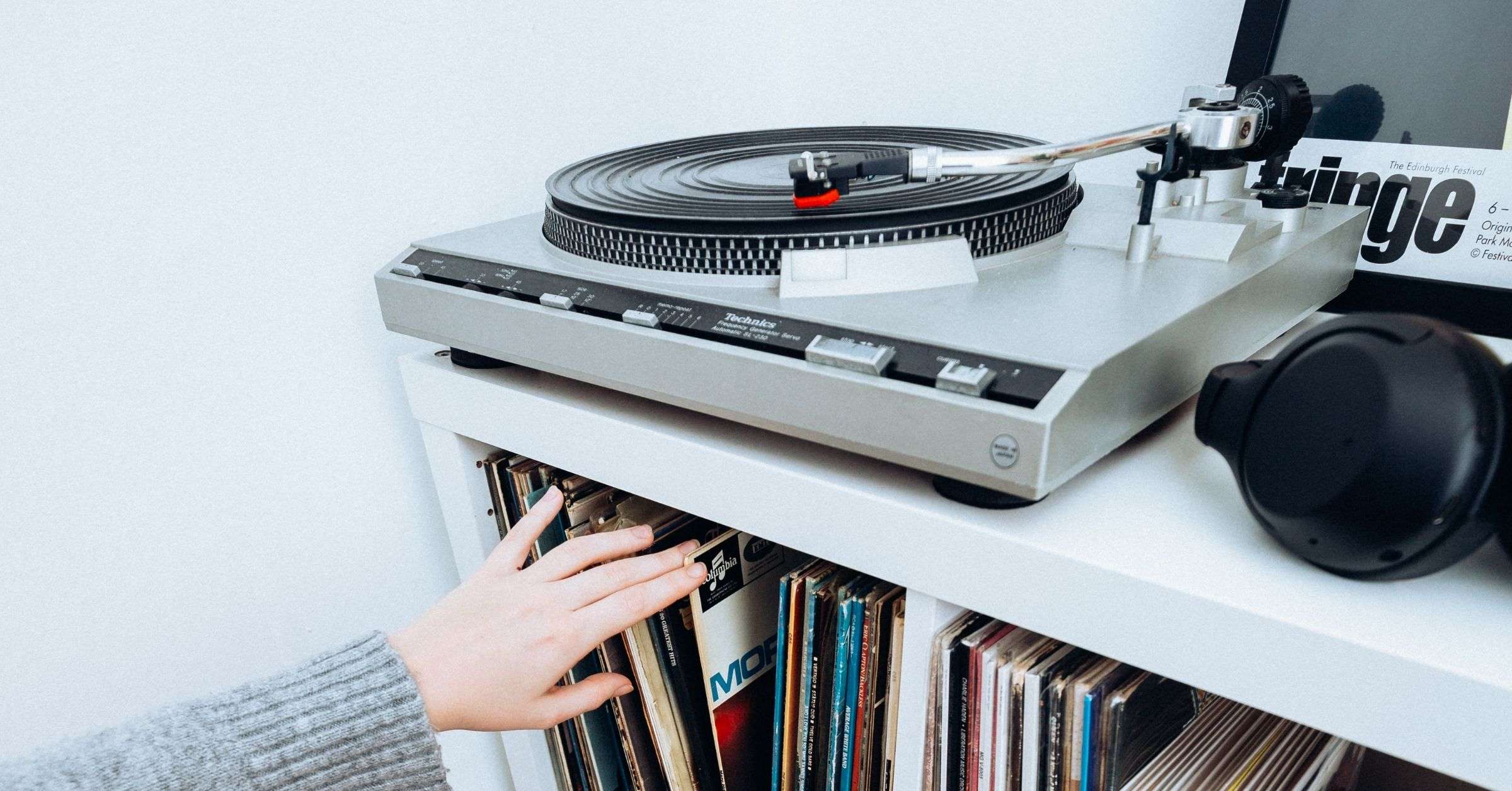When you are on the verge of purchasing a new turntable, you may be torn between buying an automatic vs. manual turntable. Each kind of turntable has its own unique set of pros and cons that you should consider.
This guide will help you decide by providing background information on each type of turntable and the advantages and disadvantages of each.
What’s an automatic turntable?
Automatic turntables are helpful for folks who don’t want to start and stop their record player manually. With automatic turntables, you won’t need to do anything other than press a button after placing your record on the platter.
A mechanical system will automatically rise and lightly drop the tonearm on the record and will return to its original position when the record finishes playing. A fully automatic turntable even repeats and begins playing the record again.
The value an automatic turntable brings may be minor, but it significantly benefits the listening process and even works to protect and prolong the life of your record collection. Of course, there are disadvantages to automatic record players; otherwise, we wouldn’t be writing this article.
Pros
The primary benefit of using automatic turntables is that you don’t have to think about where to put the stylus. When you’re a casual vinyl listener, this can be a huge comfort because you won’t be worried about missing the corner of the disc or not setting the stylus properly. If done incorrectly, this can scratch and damage the record or create a horrible crackling noise.
Moreover, you are less likely to damage your turntable’s stylus and motor if you use an automatic player. Most automatic turntables tend to have an “automatic off” mode that lifts and resets the tonearm to its resting position.
Cons
Fully automatic turntables are often more pricey than manual turntables because of the additional components needed to make the mechanics operate automatically. Having those additional connectors can make it difficult for a tonearm to track precisely.
Another disadvantage is that the mechanical linkage of automatic turntables can compromise the audio quality under the platter.
What’s a semi-automatic turntable?
Semi-automatic turntables are a middle ground between manual and automatic turntables and contain a half automated system. While starting and lowering the tonearm is usually fully manual, the system will automatically lift and retract the tonearm to the off position at the end of the record.
Pros
A semi-automatic turntable will alleviate your concerns if you are concerned about doing other activities while listening to a record. The automatic design will pick the tonearm up at the end of the record and return to a resting position.
Cons
Semi-automatic turntables are not widely produced any longer. Thus, you may find one for sale in just a few places. It suffers from many of the main issues of both automatic and manual turntables such as possessing internal mechanisms that affect performance while still not being a fully automatic table.
What’s a manual turntable?
A fully manual turntable is a type of player that is quite famous and widespread amongst audiophiles and most serious record collectors. Manual turntables have undergone significant evolution over the years, culminating in today’s contemporary vinyl record, which provides precise audio reproduction and improved sound quality.
Manual turntables are widely accessible and come in a multitude of pricing ranges. Prices range depending on the model, the manufacturer, and the delicacy of the artistry.
Depending on your budget, specific turntable designs will be better suited to your musical preferences than others. Pro-Ject, the current market-leading producer of turntables, now offers a diverse selection of record players adaptable to various musical genres.
Pros
Manual turntables allow the user to have a more interactive experience as it works manually. Because of the high demand for manual turntables with a competitive price range, there are a lot of options at your disposal.
Manual turntables allow the user to upgrade without fear of buying a brand new record player. You can buy a fresh steel platter or RCA cables. You enjoy anti-skate control and tracking force of manual powers. Ultimately, it enables you to get serious with vinyl records.
Cons
The most apparent disadvantage of manual turntables is that they are being operated manually – hence more time and energy-consuming. You may also fear possible damage every time you accidentally drop the stylus. Upon using it, you’ll need to set it up by turning it on, placing the record, and moving the tonearm.
Turntable Recommendation
If you are new to vinyl or accident-prone, consider purchasing an automated player to avoid inadvertently breaking the stylus while playing.
On the other hand, a manual turntable is not that difficult to use. After a couple of listening sessions, visually aligning the tonearm becomes second nature. For those who want the highest level of performance and a completely engaged vinyl playing session, a good quality manual turntable is a wise investment.
Furthermore, allowing the stylus to stay in the break-out disc groove for several hours has been shown to have no significant adverse effects on the stylus compared to normal playback.
Conclusion

When considering a manual or automatic turntable, think about your personal preference characteristics as a listener. If you prefer hassle-free listening or want a variety of choices and upgrade paths, choose accordingly.
Choosing a manual transmission is perhaps the most cost-effective option, and it offers up a vast array of options ranging from entry-level to the leading models. Keep in mind that much of the performance of your complete vinyl system is determined by the turntable you choose. The higher the quality of your turntable, the more the detail you will extract from the grooves of the vinyl and, consequently, the greater the satisfaction you will have.

Lead Editor / Owner
After beginning his career in the video and audio recording industry, Andrew started HiFi Hippo to share his knowledge and passion for vinyl and vintage audio with other readers.
